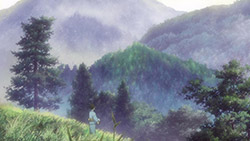 |
 |
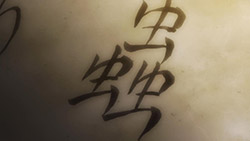 |
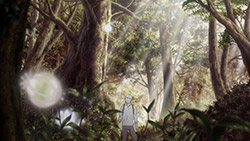 |
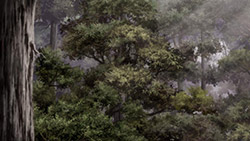 |
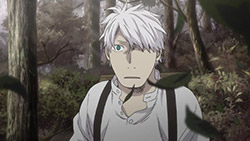 |
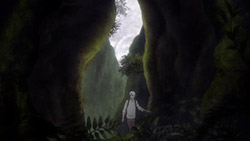 |
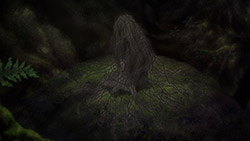 |
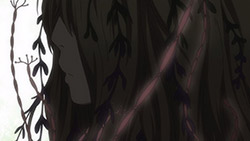 |
 |
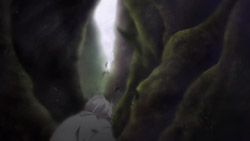 |
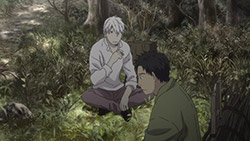 |
 |
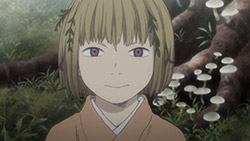 |
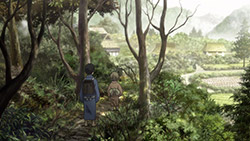 |
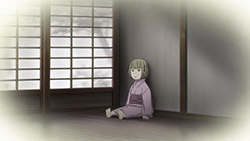 |
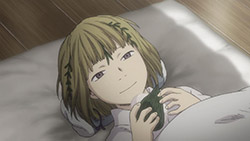 |
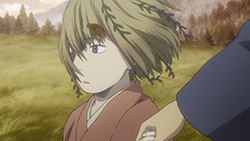 |
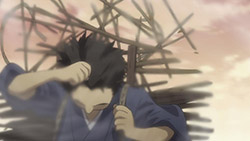 |
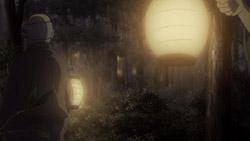 |
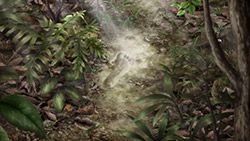 |
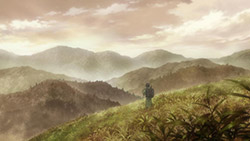 |
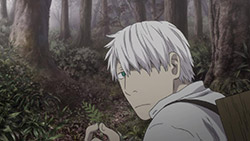 |
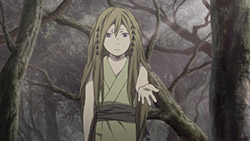 |
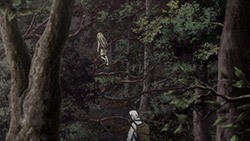 |
 |
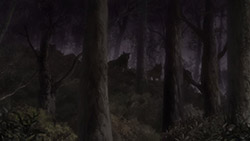 |
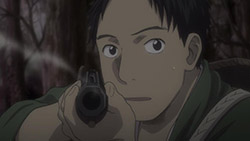 |
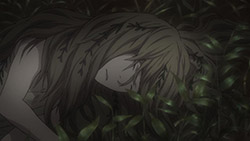 |
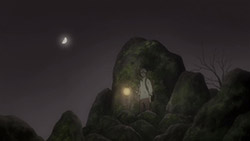 |
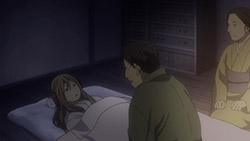 |
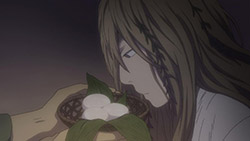 |
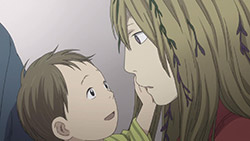 |
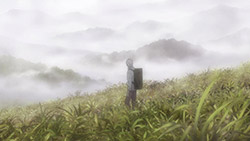 |
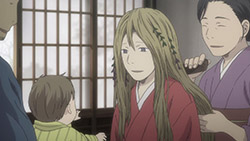 |
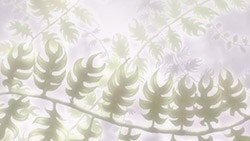 |
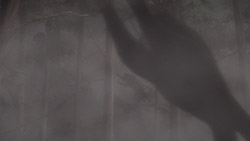 |
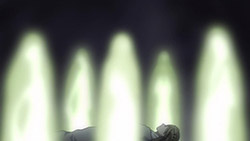 |
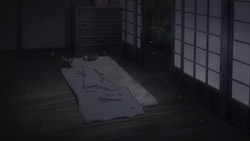 |
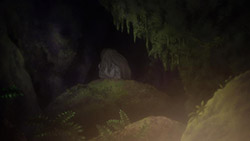 |
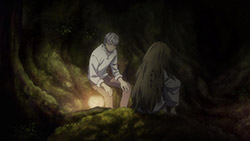 |
 |
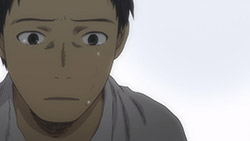 |
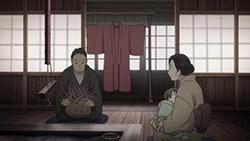 |
 |
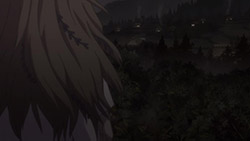 |
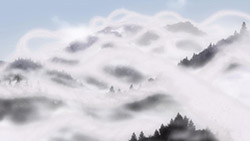 |
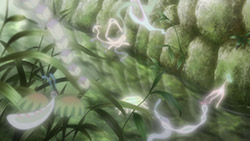 |
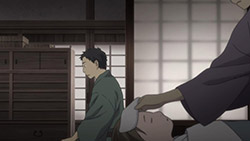 |
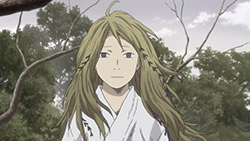 |
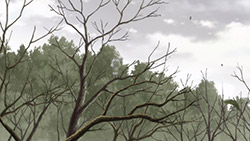 |
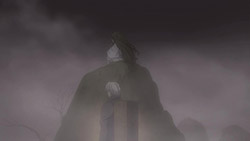 |
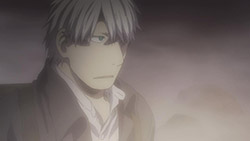 |
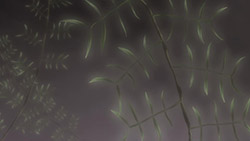 |
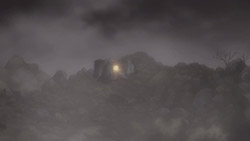 |
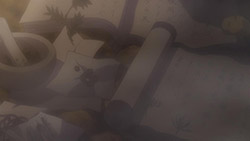 |
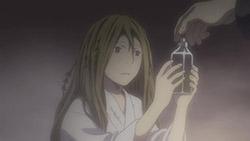 |
 |
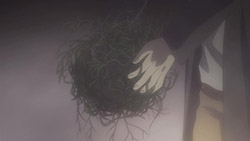 |
 |
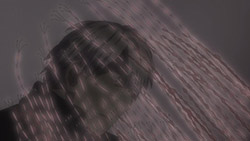 |
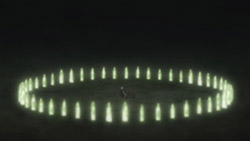 |
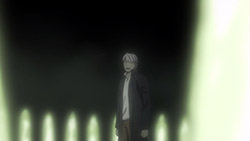 |
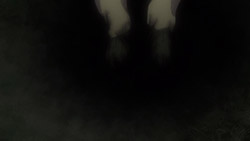 |
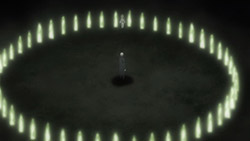 |
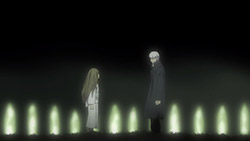 |
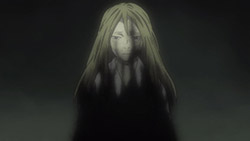 |
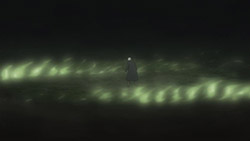 |
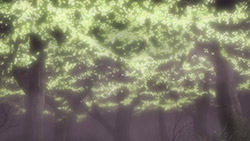 |
 |
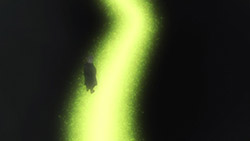 |
 |
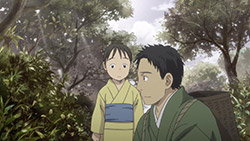 |
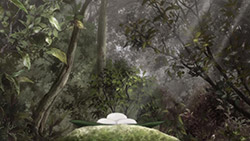 |
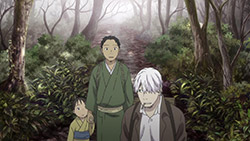 |
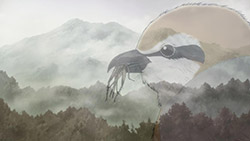 |
 |
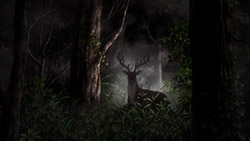 |
「鈴の雫」 (Suzu no Shizuku)
“Bell Droplets”
I didn’t realise how much I missed Mushishi until that old mushi monologue started right before the familiar OP. Ah, how nostalgic. To think that this is the last of Mushishi that we’re ever going to get, with all the manga now having been adapted to anime form. That in itself was enough to get me into a melancholic mood before I even started watching. So while Mushishi has always been a fairly serious affair, you’ll have to forgive me if I end up being more sombre than usual for this post. I’ll try.
Although Suzu no Shizuku (Bell Droplets, Belldrops, what have you) was originally a theatrical release, in practice it is not so much different from a standard episode of the anime series except twice as long, similar in scope to specials like Path of Thorns before. It is yet another bookend to an arc of Mushishi—or, rather, a bookend to the entirety of what Mushishi has been about as a whole. I made a point in Tree of Eternity about how Mushishi does not truly ‘end’ and is, perhaps, actually hard to end. Indeed, there’s still plenty of loose ends that will remain in the realm of speculation, and Ginko’s journey continues still, even in our absence. But the themes that Mushishi has consistently dealt with also need some kind of closure, some kind of final word, and that’s what Bell Droplets is about. It puts everything together for one last hurrah, like an all-star reunion of weighty issues.
Mushishi has always had a focus on families, with a particular fondness for sisters, and its also been concerned with humankind’s place in nature, so for Bell Droplets it has blended those two themes together into one character: Kaya (Saito Tomomi), the little sister who is marked from birth, eventually spirited away to serve the greater good, like some kind of tithe. It’s interesting that Ginko is initially glad of this, for it means that humans are being treated as any other animal to be chosen as mountain lords, a part of nature. The realisation, though, and perhaps it’s an obvious one from our point of view, is that humans are not just any other animal. They do not just belong to the mountain. They also belong in homes. With families. Should a ‘mountain lord’ look so pitiable? Should the arrangements of nature feel so cruel? This is Ginko’s conflict. He’s come full circle, having been given a chance for life before—a full life, not just as an extension of the enigmatic, faceless congress that is nature’s Law. Caught between a reverence for nature and a drive for life, it seems that the only recourse Ginko has is a desperate compromise. I feared for him, truly. Was this how Mushishi ends, like so many stories have, with our hero torn between two duties and having to make a tragic sacrifice?
But Ginko lives, and Kaya dies; the original arrangement held despite protest. By surviving, Ginko has also failed. We are left with complex feelings, and this is where Mushishi is at its most philosophical, nay, spiritual—more so, even, than it was in Tree of Eternity. Consider the motif of bells, an instrument of festivals, a sound that celebrates birth but also mourns death. Mushishi speaks of cycles, of the greater scheme of nature, as it did in Azure Waters. While Mushishi discusses loss regularly, for its finale it goes one further into contemplation on the afterlife, on the spirituality that humans rely on to find catharsis in death. But is it so easy to be satisfied that a loved one is still with you as a part of nature, no matter how beautiful it is? Kaya’s brother continues to leave rice cakes in the forest—an offering to the dead. And part of me still feels, like Ginko did, that Kaya’s fate was not really very fair.
And thus humanity’s shaky relationship with spirituality—it’s not going to take with all the people, all the time. Ginko believed that humans have always had a connection with nature—the spirituality of Mushishi—and will continue to maintain it into the future. But the Law believed that, with time, it would eventually be abandoned or forgotten. If we treat Mushishi‘s world as an alternate past of our own, then perhaps what we are seeing here is the end of an era. We’ve seen guns in Mushishi before, but it is not until Bell Droplets that their dominance is demonstrated. Gunpowder swept away feudalism, heralded Enlightenment and industrialisation, and ushered in a new age. It may remind you of the central conflict of Miyazaki Hayao’s Princess Mononoke, where iron and gunpowder were the symbols of humanity’s secular power. Princess Mononoke was relatively pessimistic—with only a tenuous case for coexistence between humans and nature—whereas Mushishi has generally been optimistic in tone, but like in many of its stories, the final conclusion of Bell Droplets is left for us to judge. Looking at our modern world, perhaps there is cause for cynicism. But is spirituality not, on some level, a question of faith? Perhaps that’s what Mushishi is asking of us, with its open ends. The world is beautiful. Love is beautiful. Believe.
Epilogue:
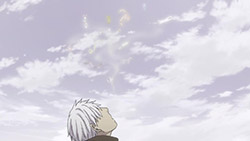 |
 |
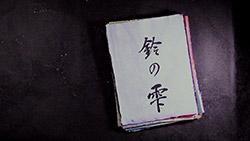 |
Final Thoughts
I’ve been hearing rumbles about the death of the art of anime for a very long time. When the first bubble ended, anime was going to die. When Disney closed its studios, animation as a whole was going to die. Now, Studio Ghibli is closing shop, Miyazaki’s had his swansong, Takahata’s had his swansong, and without these two great giants of the industry perhaps anime is going to kick it for real this time. There is certainly an argument for Mushishi being ‘Ghibli-esque’, or at least ‘Miyazaki-esque’—beautifully detailed backgrounds, beautifully minimalist scores—so now that there will be no more of it perhaps we should finally prepare to say goodbye to this form of art, at least as we know it.
Bell Droplets was by no means a high-budget, effects-filled action-fest that people will immediately point to when citing an example of superb animation. You’ll see some computer graphics here, some rotoscoping there, and animation shortcuts quite regularly. But it captures, I feel, a strength of the medium that simply cannot be replicated elsewhere. There is a certain je ne sais quoi about hand-drawings and simple designs that create a very different aesthetic than live-action (‘reality’, I suppose) or CGI (the inheritors of the animation throne, many would say). If I were a student of the fine arts I would be able to make a more useful analysis of it, but I would say that I fell in love with anime at first sight (Castle in the Sky Laputa to be precise) not only because it was pretty but also because of how it captured the imagination. Sure, computer graphics may be able to more easily render details and movement at length, but that (while important) was never really the point, was it? Is the power of animation not the power to go beyond reality? As it was with Mushishi; the beauty of its world was larger than life, but its people and their struggles were sentimentally simple. In both cases, it was about capturing the essence. As the Impressionists may say, it’s about the idea, not the form, and Mushishi was consistently brilliant in holding ideas with pencils and paper. I, and others, have talked about its merits before, so I won’t retread old ground. My point is how Mushishi is an excellent example of the artistry of anime separate from other mediums.
So, again, no more Mushishi. It’s something that needs to sink in, maybe. With an era ending in Bell Droplets, perhaps an era is ending in anime too. At the risk of sounding melodramatic, perhaps we will scarce see the likes of Mushishi again. This style goes out of vogue. There’s no more money in it. Any number of diagnoses. We’re open to be very jaded about the entire industry, and perhaps it’s always easier to embrace pessimism in advance. But Mushishi also urges us to keep faith in an innate humanity. Substituting art for nature, humans have always been moved by art, and always will be. If that’s true, then I’m sure anime will show its capacity for artistry still. Mushishi has ended, but at the same time it really has not. Believe.

That…was beautiful. And no more needs to be said.
My body literally shook when Shiver started playing.
It didn’t really hit me until halfway through the episode that this was it, I had to pause it because I couldn’t see through my tears. Mushi-shi will be dearly missed.
Passerby, thanks for reminding me this had been released, it made by Sunday.
So what’s going on here? Ia this considered episodes 23-24? What about episodes 21 and 22?
Episodes 21~22 were episode 9~10 of Zoku Shou 2, since the Zoku Shou special was considered to be episode 11~12.
It’s a matter of numbering. It seems that, officially, Mushishi does not include specials in their episode numbering, which is how we’ve also done it here on Random Curiosity. If one did number the specials, then Suzu no Shizuku would be ’23-24′.
The anime industry is producing a lot of garbage nowadays but almost always there are 1 or 2 enjoyable series. All we can hope that the whole moe/ecchi/robots/high school/over the top action genres die and out of it come out something beautiful like this show witch shakes my soul.
Like this final episode, what you’ve writen is also beatiful. Believe.
This is a beautiful episode of Mushishi with Ginko desperately trying to save a life (and failing) again. However, is it that bad to ask for a proper closure in Ginko’s story? I mean, I like that guy to bits.
Is it bad for me to cry after finishing this one because I realized that every single chapter of Mushishi was now adapted? I don’t know. Mushishi is one of my top three anime shows and it felt sad to see it end. Anyway, I also feel fortunate because I listened to the blogosphere and watched this show on a boring Sunday morning.
Did it change my perception in anime? Maybe not that much since I saw Shinsekai Yori before this one but it restored my faith in animes with episodic formats. Mushishi is one of those few animes where a single episode feels complete and leaves you a very pleasant (at times) depressing mood for a long time. Ugh. So much for my fanboyism.
On a very interesting note, Mononoke (the anime series), Kino’s Journey, Natsume and Mushishi seem to sprang from a certain branch of anime with very beautiful and haunting episodic stories.
In my humblest opinion, I think the art has gotten more beautiful but the story has become less astounding. I remember when Mushishi S1’s episodes left a great impact on me even two to three hours of watching it. Now, it’s just a pleasant thing to rest one’s eyes on.
I like it when the mushishi exploit human’s obsessive tendencies and greed.
I checked randomc and there is no coverage of Mushishi from episodes 10 to 26?
Is there any chance someone will blog about older episodes?
We’re pretty busy just blogging current stuff, so it’s unlikely we’ll get the time to revisit the myriad gaps of the past, but one can never rule things out completely, I suppose.
a strong finish for mushishi.
rather than waxing lyrical about an age bygone and staying stuck in the past, instead, here’s to the new and wondrous animes of the future.
Damn, I too had forgotten how much I missed this show. It manages to draw you in with an atmosphere so much more powerful than any fantasy show could ever achieve. I really need to watch this movie, if only I could squeeze in the time…
Man this was the very definition of bittersweet. I can’t believe there will be no more. It was a nice touch when all the title cards disappeared at the very end.
Well, it’s not just Mushishi the anime. It’s just that its creator mangaka Urushibara Yuki hasn’t written a damn thing for a looooong time. Her other work Suiiki is another absolute favourite of mine and I wish we could see a full-pledged anime of it too. I wonder if she just doesn’t have the inspiration to write anything else when she’s already creted THE Mushishi.
People like her create things not for money (originally) and the number of this kind of people is decreasing dramatically, so I don’t really have high hopes for anything as awesome as this.
Me and my friends went to Kofu, Yamanashi prefecture last week, and there were TONS of mountains, mountains literally everywhere, and they reminded me of Mushishi so much we kept on listening to its OSt throughout our trip.
I’ve just finished watching it and it amazes me how they managed to depict the original spirit of the Japanese mountains. It’s 100% true, the atmosphere, the view, everything. Well, except for the mushi but one can’t be so sure xD
I didn’t get to walk in the mountains but I’ve been having vivid dreams of me walking there ever since the trip.
If anyone’s comin gto Tokyo. I definitely recommend to go to Yamanashi, it’s only 1h30min train ride from Tokyo and is really cheap. Not to mentiom that they have lots of amazing right in the mountains.
I will really miss Mushishi.
I want to recommend this to my friend that doesn’t watch anime but not sure how to describe it, lol. Can you even describe Mushishi?
Thank you to everyone who made this masterpiece possible. One of the best of all time, in my opinion.
Thank you Passerby for writing this review. This last episode/movie completely went under my radar and I wouldn’t have seen it if it weren’t for you. So, again, THANK YOU!